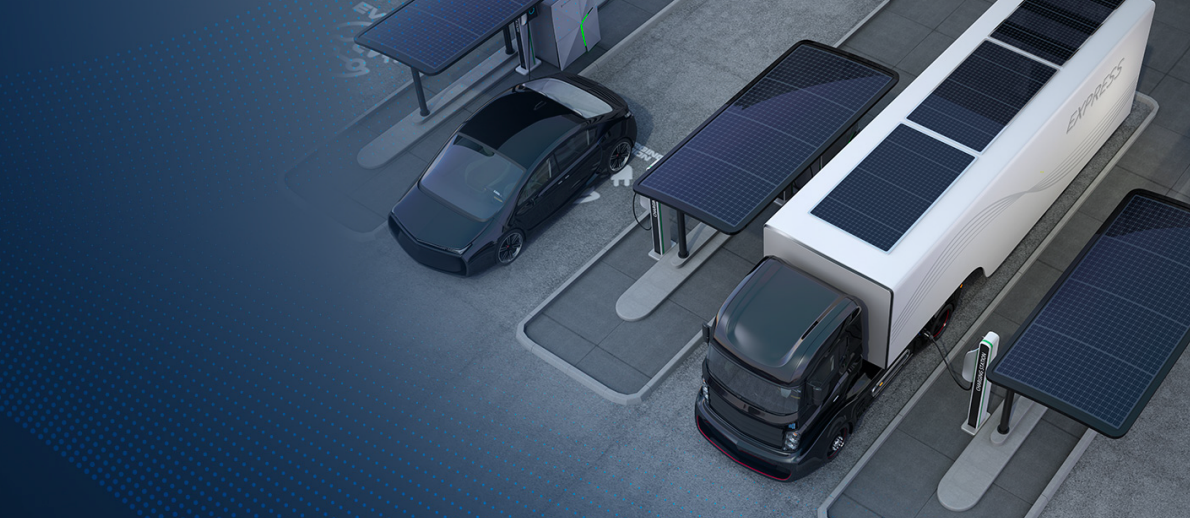Enabling a More Sustainable Future Through e-Mobility Ecosystem Requires an Automotive Engineering Paradigm Shift
Michele Robinson-Pontbriand, Director, Corporate Social Responsibility

These are exciting times in the automotive engineering community and environmental sustainability space! Countries around the world are fueling the momentum for a cleaner future through incentives for consumers to adopt hybrid electric vehicles (HEV) and electric vehicles (EV). These and other high-level global initiatives expected to release over the next two decades are driving the e-mobility revolution faster than expected, and raising hopes of related positive environmental impact sooner.
While 20 years may seem like a luxurious timeline to bring new vehicles to market, it is a formidable task that requires an entire engineering paradigm shift towards the e-mobility ecosystem. Key to this transition, and helping speed it safely with the intended positive environmental outcome, are innovative electronic design and test solutions.
Engineering challenges in electrification of the modern vehicle
Supporting the electrification of the modern vehicle is an entire energy ecosystem that spans photovoltaic (PV) inverters to harness and convert solar energy, energy storage and distribution solutions — whether within microgrids or smart grids with a host of charging facilities — and innovations in cells, batteries and power. This ecosystem, coupled with emerging criteria to regulate the industry, creates challenges for engineers to verify and test each design from development through high-volume production.
Take, for example, the many electronic devices and sub-systems behind the electrified vehicle microcosm. The examples below each have challenges that require innovative solutions:
- Power devices – New test methods are needed to produce reliable and repeatable measurements of new wide bandgap semiconductors used in EVs and HEVs. Besides ensuring safety of the test engineers, the devices under test need extra protection due to the high voltage and high temperature environments which these devices work under.
- Power conversion – One of the most noticeable changes in vehicle electrification is the addition of high-voltage, high-power batteries to a platform that is traditionally 12 volts. HEV and EV batteries are 300 volts and higher, bringing with them additional test costs and risks that must be mitigated.
- Cells and batteries – While much progress has been made to extend the mileage range of HEVs and EVs since they first entered the consumer market, mass adoption of the e-mobility ecosystem will require cells and batteries with even better range performance while meeting high safety requirements and maintaining affordable margins.
- EV-to-grid communication – Charging stations, home energy management systems, microgrids and smart grids all play a vital role in this ecosystem, and require new approaches to support the mass adoption of an e-mobility future.
Electronic design and tests are critical and ongoing in enabling the e-mobility ecosystem
The e-mobility market requires flexible and powerful testing tools to accelerate the design and production of innovative solutions in this space. However, no single test technology can effectively address the emerging design and verification challenges from the wide range of applications, environments, and requirements of this ecosystem. In addition, the needs will continue to evolve with new safety and performance conformance standards.
Newer and better electric drivetrains will be developed to satisfy consumer demands and fulfill the incentive criteria offered by governments, such as fuel economy and longer ranges. As a result, the coming years will see exciting innovations to develop better power devices, cells, batteries, and a larger charging infrastructure — including better ways to harness natural energy sources, such as the sun, to fuel the entire energy ecosystem.
At Keysight, we are confident of providing both the depth and breadth of test and measurement solutions to address the unique design and test challenges in this area while bringing the vision of a more sustainable energy ecosystem to reality faster. An exciting time indeed!

